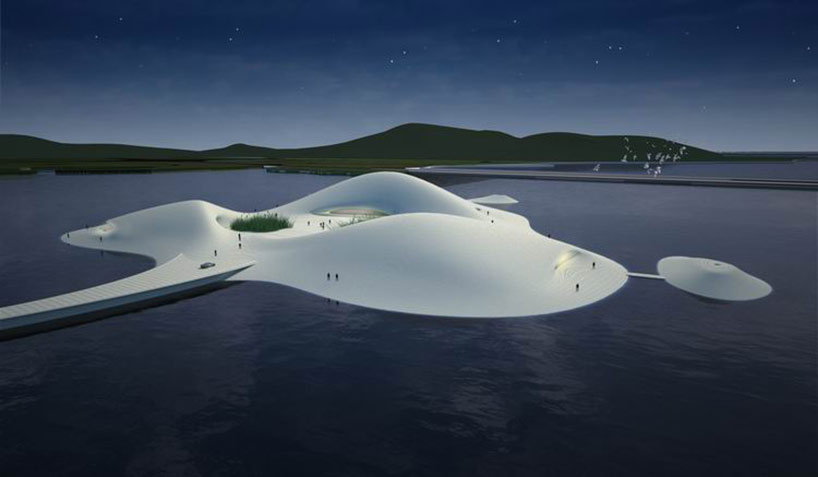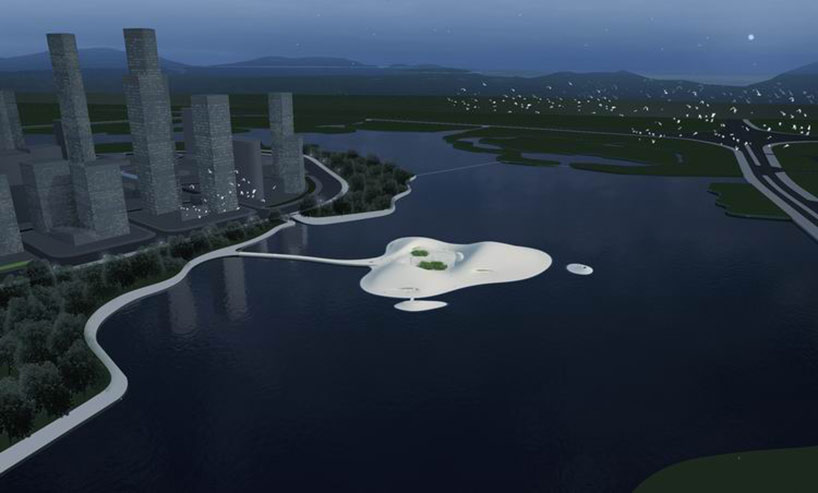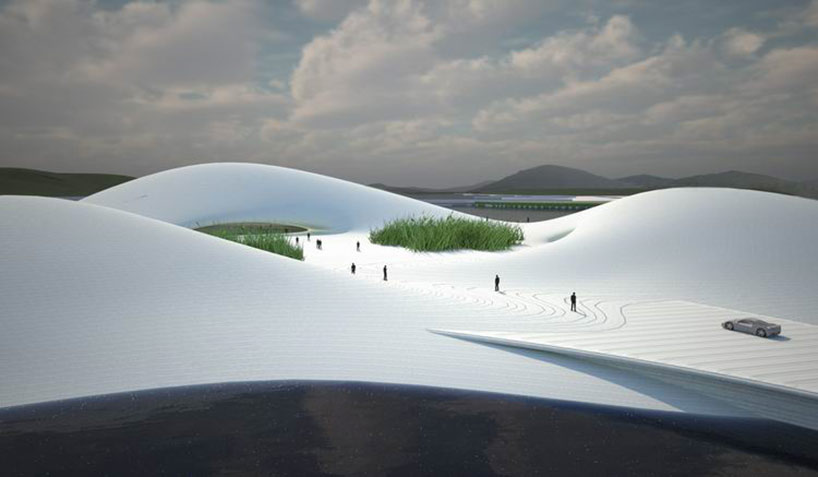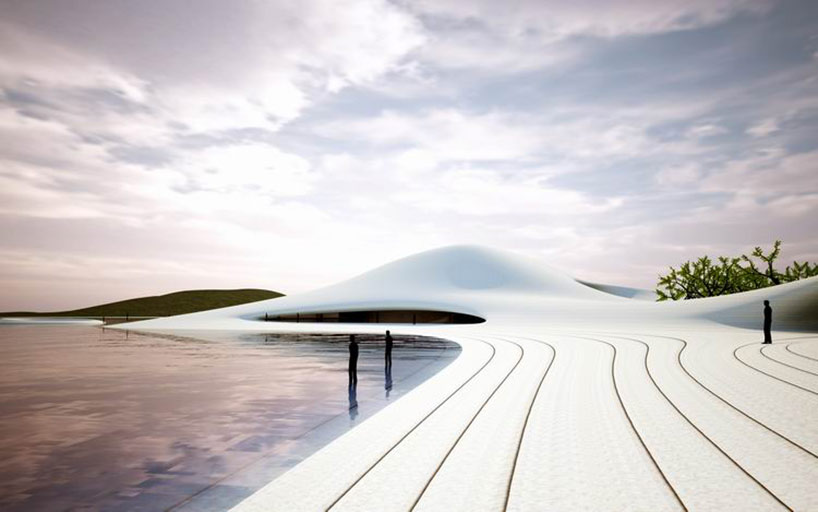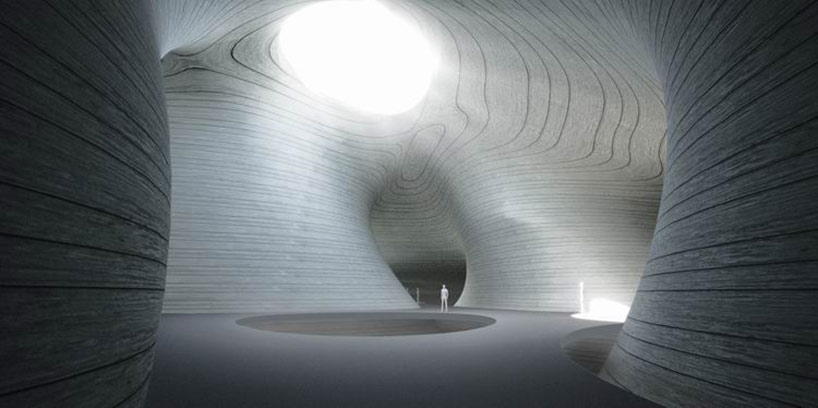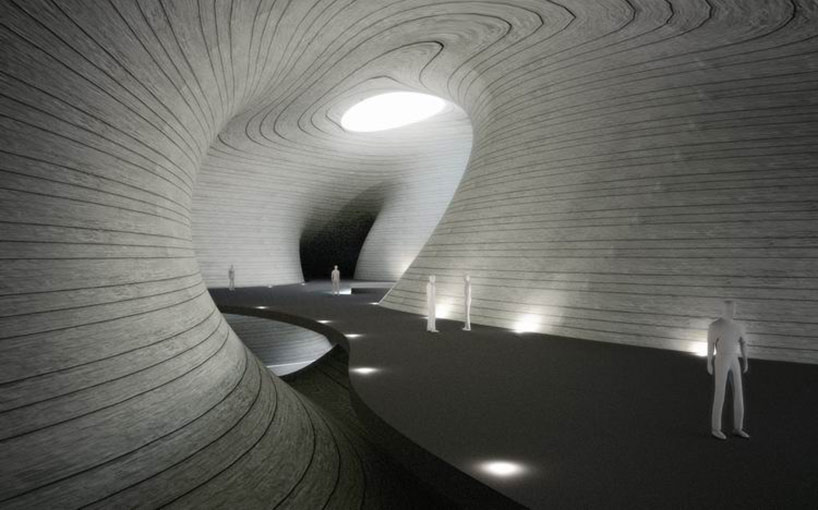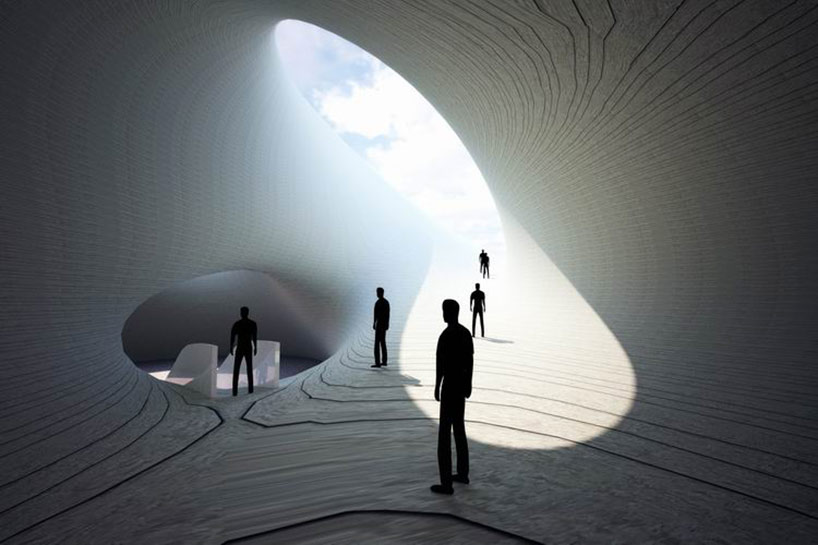On the island of Pingtan, China, construction has begun on the Pingtan Art Museum. Designed by the Chinese practice of MAD Architects, this is their third and possibly their most innovative museum design on a unique site.
By using a building material of concrete, blended with crushed local sand and shells, an immediate connection has been made with the location. Designed to resemble a floating island on an inland lake with access via an undulating bridge like walkway, the museum mirrors the shapes of the distant hills, its low curving shapes as a symbolic oasis. The organic cave like interior incorporates cut out skylights allowing natural daylight into the mysterious semi underground spaces which will soon house one of China’s largest private collections of national treasures.
Currently, the island of Pingtan, the nearest landmass between the mainland of China and Taiwan, is inhabited by fishermen and the military personnel at a local base. The future of the island is set to change as it has been selected as the location for extensive urban development. The museum is hoped to function as a public space for the local people to connect the history of the island with Chinese ideology. The Pingtan Art Museum is planned to open in 2016 and will facilitate a cultural exchange between the mainland and Taiwan.
